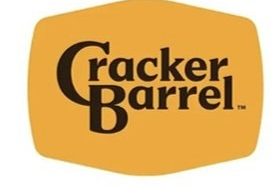
Staffing in the radio broadcasting industry has been a challenging topic for some time now. On the one hand, the “population” of most radio station clusters continues to drop. But of course, that supposition on my part comes without any data. No one’s accounting for actual employee numbers. But if you visit so many station groups around the country, you’re likely to walk into numerous radio buildings with wide open spaces where there used to be people. On the other hand, there tends to be fewer managers overseeing more clusters in more markets.
 Can most radio groups or clusters hope to grow with so many fewer employees? It’s hard to see that working over the long haul. In fact, most operations are fortunate if they somehow maintain their ratings ranks and their sales numbers. Serious growth— in both ratings and revenue—isn’t going to happen for most companies given how far back most staffs have been scaled. It doesn’t help when the “market manager” lives in a city hundreds of miles away and is only in the building a day or two a week.
Can most radio groups or clusters hope to grow with so many fewer employees? It’s hard to see that working over the long haul. In fact, most operations are fortunate if they somehow maintain their ratings ranks and their sales numbers. Serious growth— in both ratings and revenue—isn’t going to happen for most companies given how far back most staffs have been scaled. It doesn’t help when the “market manager” lives in a city hundreds of miles away and is only in the building a day or two a week.
These days, identifying the most valuable player at the station level is open to debate. An obvious choice is the morning team, especially if they do a cume-urgent show that is habit-forming. Or the program director who has a vision for what the station is today and aspires to be tomorrow.
But I’m going to push back on both of those content-driven positions, and instead point directly at the station/market manager. These days, he or she oversees a cluster of several local stations. And depending on the company, there may be out of market stations and clusters to account for, too.
It’s a job with a lot of responsibility, and the amount of “managing up” to corporate and “managing down” to the local staff requires skill, diplomacy, and charm. That’s why it’s relatively easy to spot the differences between the true stars and the also-rans.

via LinkedIn
All these thoughts came to mind when Chris Brunt sent me a Wall Street Journal podcast, “The 20,000 Steps To A Walmart Manager’s Six-Figure Salary.” It features Walmart manager Nichole Hart (pictured) who began her career with the company as a teen, making $6.25/hour.
If the title of today’s blog posts offends any of my radio GM friends or clients, consider this. A Walmart manager earns well into the six-figures, ranging as high as $400,000 in salary, bonuses, and stock options. Nichole Hart makes nearly a quarter million a year—and she doesn’t have a college degree.
Why does Walmart pay so handsomely for its store managers? As Hart points out, “I would say for retention, to be able to get quality leaders in these positions because it’s a very important position to hold and I think that they want to get the right people in the right place to be able to deliver results.”
For Walmart, individual store goals are set by a corporate team, but local managers have the flexibility to decide what gets stocked and sold at their store.
If that sounds like a lot like how many companies operate their local radio stations, than you can see why this story resonated for me. The fundamentals of strong management are universal. However, Walmart’s performance over the past quarter century has been quite a bit more impressive than how most broadcast radio has fared during this same period.
What can today’s radio managers learn from their counterparts running Walmart stores?
1. Know your customers – In order to make aggressive budgets (and earn their high salary potential), Walmart managers need a strong understanding of their “audience”—who they are, where they live, their perceptions, and their buying habits. In the case of radio, the average manager is overseeing multiple brands, so there are additional demographics to track and take into account. In radio, audience research dollars are non-existent or at a premium, so most managers may need to rely on eye-contact with listeners at station events, etc. That’s one of the ways Walmart managers learn about their customers.
2. Know your staff – The average Walmart store has 300 employees, more than most radio stations (although some larger public radio operations are in that neighborhood). The first thing Walmart’s Hart does when she gets to work is to do a lap around the store, taking in the vibe of the store and her staff. On any given day, Hart reports she might take 18,000 steps a day which translates to over 8½ miles. But that’s how you stay connected to your team.
3. Practice customer management – Of course, this breaks both ways because Walmart and radio managers deal with friendly consumers and those who are dissatisfied for whatever the reason. Hart and her counterparts at Walmart stores everywhere need to be especially careful not to alienate “influencers” who might be upset by something as simple as the store not having a favorite cereal in stock. That probably sounds a lot like dealing with the listener who complains the station “plays the same three Bon Jovi songs.” In any case, effective managers have to learn how to deal with this stuff.
4. Rallying the troops – Getting a few hundred employees on the same page is no easy trick, but that’s what a Walmart manager is charged with doing. Similarly, radio managers need to make sure they’re connecting with very different departments and the people occupying them—programming, sales, marketing, digital, and HR. In public and Christian stations, add in that development department. And in many public radio situations, a news team that is expansive in major market situations, is also a key component in the staffing mix.
5. Dealing with digital – For Walmart and radio, it is no longer just an analog business. Digital has become a major component, contributing about 25% of Hart’s store revenue—and growing every year. In addition to connecting with the thousands of local folks who walk into her Walmart—her “cume”—she now has to deal with thousands of shoppers from all over the place. This means catering to very different consumer needs, understanding how they shop online and what they order. Interestingly, most radio managers are facing similar challenges and opportunities on the digital front.
Regular readers of this blog know I have long had an eye on the nation’s #1 retailer. Starting in 2024, Walmart amped up its presence at CES, creating their own temporary building to showcase their newest B-to-B and B-to-C innovations, including AI, drone delivery, and other technical breakthroughs that enhance the shopping experience.
their newest B-to-B and B-to-C innovations, including AI, drone delivery, and other technical breakthroughs that enhance the shopping experience.
As in radio, none of these enhancements matter in stores—or stations—if they are mismanaged to begin with. Lost opportunities to add sales, retain consumers, and reinforce regular usage are all part of the job responsibilities of the local manager. In many ways, their performance explains why one store (cluster) in a given market is more successful than the same basic operation in a similar-sized market.
Management matters.
The analogies between Walmart and radio don’t end there. Before every in-store intercom announcement, there’s a signature, identifiable Walmart tone, something I’ve been urging radio to adopt for well more than a decade. These audio devices work when they’re well produced, chosen, and executed. They can help a big box store like Walmart—or any radio station—stand out in a memorable way.
And as covered here before, Walmart has their own radio station that is much-appreciated by its worker base. Yes, Walmart Radio plays in the nearly 5,000 stations in the U.S., guaranteeing an impressive “cume” audience. The station comes complete with talent, jingles, and the other accoutrements. Walmart Radio is modeled after the real thing and that’s one of the reasons it’s popular among the employee base.

At this challenging time for broadcast radio in so many markets and at most companies, broadcasters might learn a thing or two from that Walmart store down the street.
The next time you visit a store, consider asking whether you can say hello to the manager. You never know what you might learn that can help your station—and your career— grow.
And seriously, wouldn’t it be great to have a greeter?
Originally published by Jacobs Media








